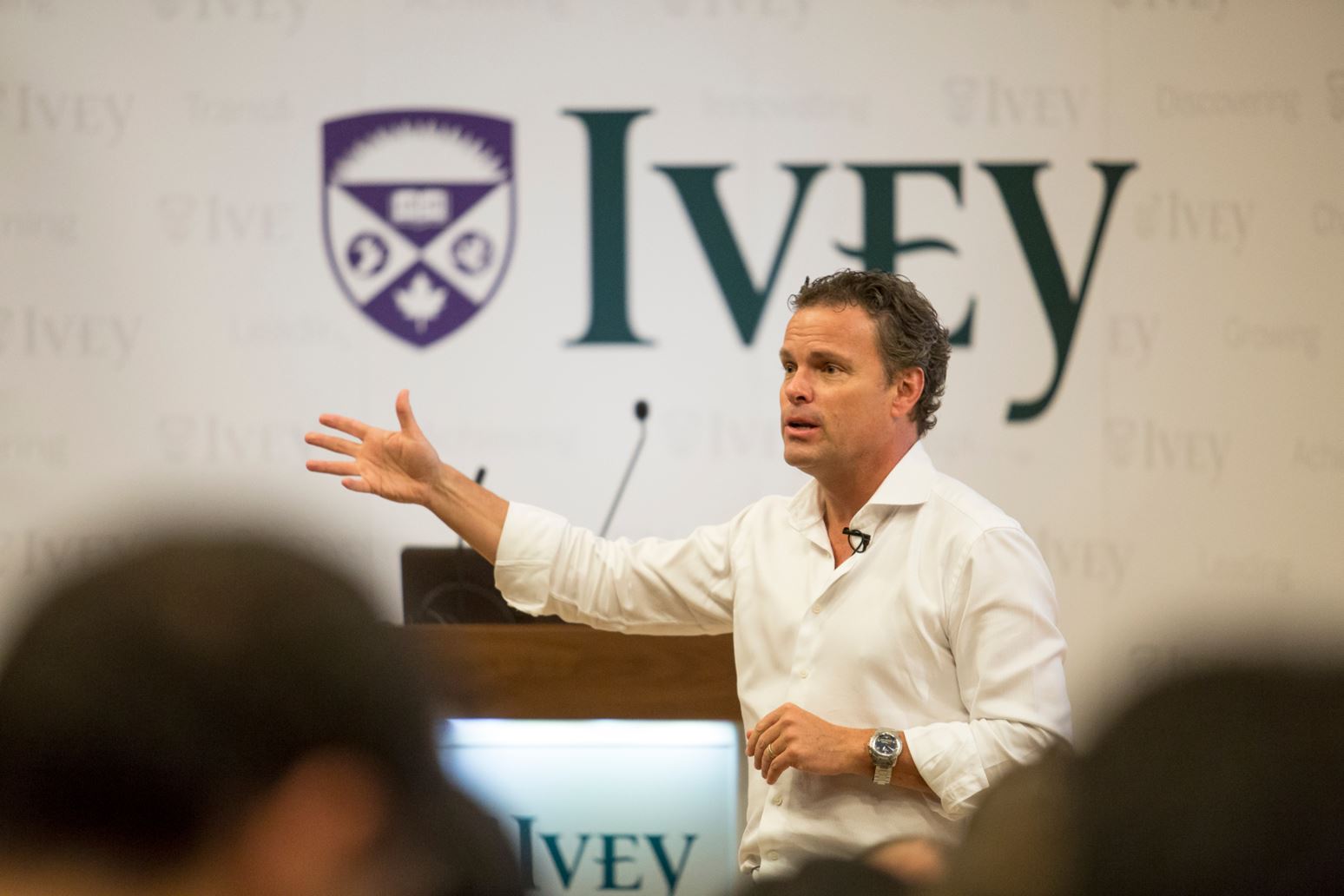About the Author: Kathryn Tang is a current MBA student at Ivey Business School with an undergrad education in Mechanical Engineering and Political Science. Coming from the Wind Engineering Consulting industry at RWDI, Kathryn has experience managing people for greater performance and recognizes the impact potential of effective leadership and the importance of having an ethical foundation.
In the hyper-competitive airline industry, WestJet continues to build upon its origins to expand and ascend as one of the most profitable airlines in the world.
Richard Bartrem, the Vice-President of Communications and Community Relations at WestJet, brought his insights on their strategy to our MBA class on August 11th.
The airline industry carries a long history of shareholder value destruction, where the airline graveyard claims 97% of new entrants within their first 7 years of operation. Recognizing an unmet demand for no-frills service, WestJet entered the Canadian market in 1996 with a business modelled after Southwest Airlines. Initially entering the market with a single fleet of 737s, WestJet provided point-to-point, short-haul service to secondary regional airports in five Canadian cities at a low price. Where flights have become commodities, WestJet's internal culture was the "potent differentiator" that enabled it to execute upon its strategy. Its culture not only ensured its initial success, but still provides a source of sustained competitive advantage today.
With a focus on the customer experience, WestJet was founded as an employee-owned company to align individual objectives with those of the organization. Profits were shared across all tiers of their team, and leaders focused on engaging their employees in an environment that was transparent, informal, and fun. Their philosophy was to take good care of employees, who will provide a great guest experience, which will produce great financial results.
To maintain a collaborative culture, WestJet leaders demonstrated a constant commitment to these values. Bartrem notes that "a lot of unions come in because there's a lack of communication on the front line." Unlike Air Canada, WestJet is non-unionized, which Bartrem attributes to senior leaders at WestJet making their visibility a priority to ensure that employees at all levels have access to those at the top. WestJet's leadership team sets the tone for collaboration, where even the CEO is expected to help clean the plane along with their colleagues. This expectation is also built into the recruiting process, where one measure of fit is tested as "finding people who are okay with helping to clean the plane."
In 2013, WestJet expanded their network through Encore, their new regional air service, which acted as a feeder channel to attract new customers and improve capacity utilization on major routes. With a focus on maintaining an effective culture, WestJet seized every opportunity to involve their stakeholders in a democratic process. Prior to the launch of Encore, WestJet engaged prospective customers directly by asking towns to submit requests for service. Internally, employee-owners voted for or against the launch of Encore, as well as for the name of Encore. Rather than using direct deposits, WestJet leaders looked for opportunities to hand out paper cheques with a hand shake to further strengthen their relationships with front-line employees.
In order to succeed as a regional service provider, Encore needed to leverage a consistent WestJet brand, while offering low fares. When a different compensation structure with lower pay was proposed for Encore employees, WestJet's collaborative culture became apparent as a safeguard. At a quarterly Town-hall meeting, a WestJet pilot demonstrated a deep sense of responsibility toward his colleagues as he advocated on behalf of future employees who did not yet exist.
Since its introduction, WestJet Encore has been successful as an individual player, but it has also transformed the air travel landscape in their new markets. In anticipation of WestJet's entry, competing airlines have been known to reduce prices by 20-40%, and demand in traffic after WestJet's entry has increased by 40-55%. WestJet has been able to excite consumers about its entry and reduce the barriers to flying.
WestJet is a prime example where culture can be a source of competitive advantage. In a highly-competitive landscape, WestJet was able to sustain their upward pitch by having a culture of responsibility and cooperation, allowing them to deliver excellent customer service without increased costs. As leaders, we have the choice to set the tone for our organizations to make decisions with an ownership mentality, support our peers, and be accessible. We need to design incentive structures that encourage behaviors that support our strategy and engage our stakeholders at all levels to take part in crafting the right solutions.
